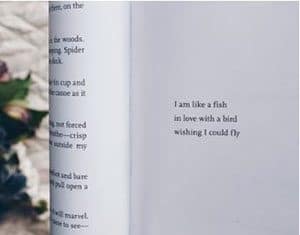 Forget for a moment the rules of prosody and other constraints placed upon the poets of the past. Forget that Shakespeare composed 154 sonnets predominately in iambic pentameter. Forget that the Romanticists used rhyme in their lofty odes. Just think! Do your thoughts flow in rhymed verse? Do your joyful or sorrowful feelings originate in spondaic splendor?
Forget for a moment the rules of prosody and other constraints placed upon the poets of the past. Forget that Shakespeare composed 154 sonnets predominately in iambic pentameter. Forget that the Romanticists used rhyme in their lofty odes. Just think! Do your thoughts flow in rhymed verse? Do your joyful or sorrowful feelings originate in spondaic splendor?
Modern poets do not need to use a structured rhyme scheme or a regular meter in their poems; however, if a poet intersperses internal or end rhyme sparingly, he/she draws attention to these lines in the poem. The reader then needs to look closely to determine the significance of the momentary movement away from free verse. “’It is this contrast between fixity and flux…which is the very life of verse,’ [T.S.] Eliot claims, concluding that ‘the division between Conservative Verse and vers libre does not exist, for there is only good verse, bad verse, and chaos.’” (https://www.poets.org/poetsorg/text/some-reflections-eliots-reflections-vers-libre-verse-and-free-verse)
Interesting….
If you are not confused yet, then look at the advice Rachel Wetzsteon provides “to aspiring young poets: life may be full of painful choices, but as for whether to write in form or free verse …well, this is one you’re really much better off not making.” (https://www.poets.org/poetsorg/text/some-reflections-eliots-reflections-vers-libre-verse-and-free-verse)
Hmm…what to do?
A creative and masterful use of diction, imagery, figures of speech, literary devices, repetition, and tone is far more important than a rigid adherence to an archaic set of rules regarding rhythm and rhyme.
Be free to be thee! 😉

Recent Comments